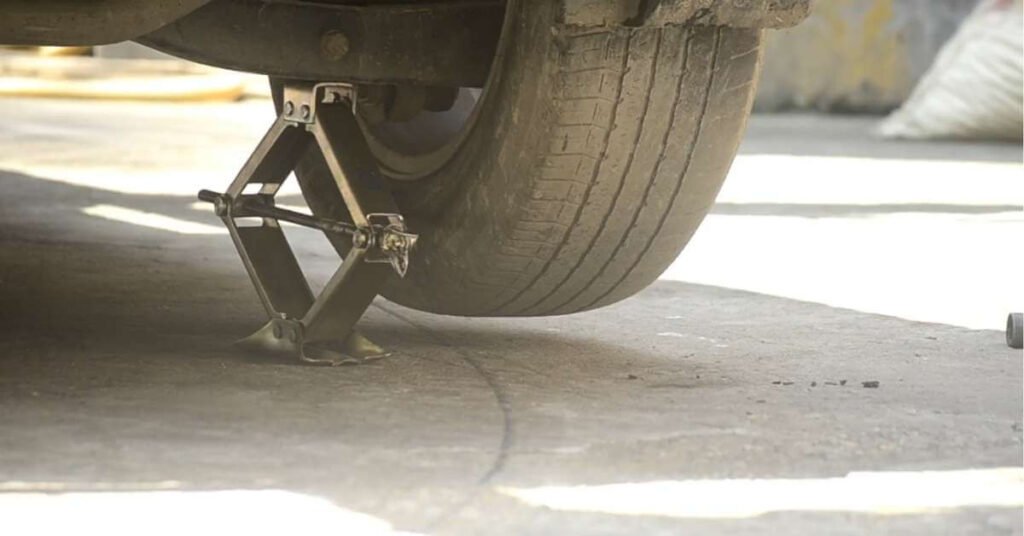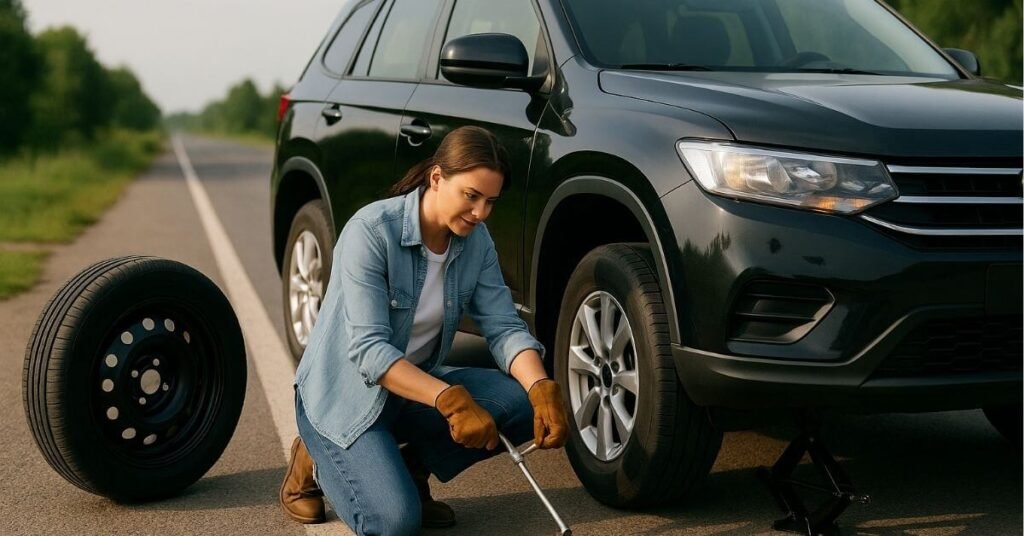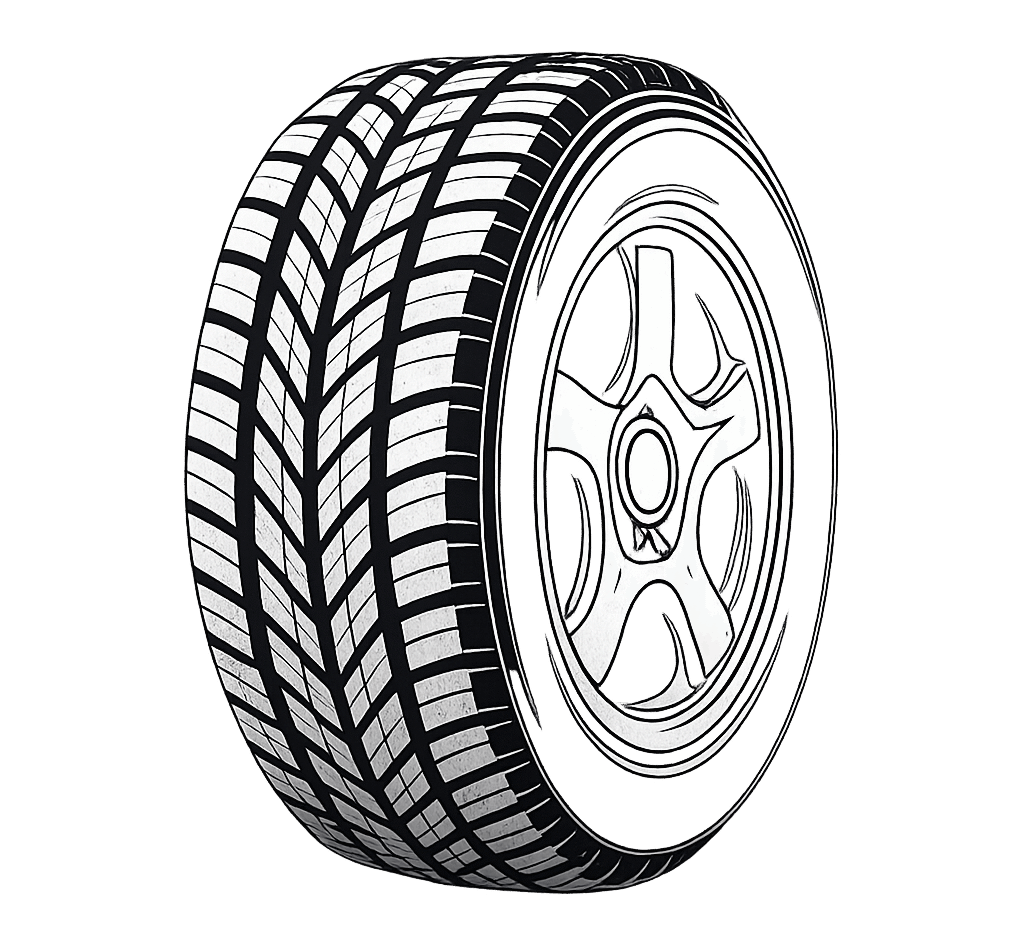How to Change a Tire on an SUV: 8 Simple Steps for Beginners
Last updated on August 15th, 2025

Changing a tire might seem intimidating, especially if you’ve never done it before or if you own an SUV, which tends to be heavier and bulkier than smaller cars. But knowing how to change a tire on your SUV is an essential skill that can save you time, money, and stress when you get a flat on the road. This step-by-step guide will walk beginners through the process with clear instructions, safety tips, and the right tools to make changing your tire as straightforward as possible.
Why Knowing How to Change a Tire on an SUV Matters
Flat tires happen unexpectedly, and waiting for roadside assistance might not always be convenient or timely — especially if you’re far from help or in an unsafe location. SUVs also tend to have larger tires and require specific jacking points, making the process a bit different from smaller vehicles.
Learning how to safely and confidently change your SUV tire will empower you to handle this common emergency yourself, keep you safe, and get you back on the road faster. If you’re new to vehicle upkeep, be sure to check out our car maintenance tips for beginners to build your skills.
Tools You’ll Need Before You Start
Before diving into the process, make sure you have these essential tools ready in your SUV:
- Spare tire: Usually located in the trunk or under the rear of the SUV. Make sure it’s fully inflated.
- Jack: A scissor jack or hydraulic jack rated to lift your SUV’s weight.
- Lug wrench: Sometimes called a tire iron, it’s used to loosen and tighten lug nuts.
- Wheel wedges: To prevent the SUV from rolling when it’s jacked up.
- Gloves (optional): To protect your hands from dirt and sharp objects.
- Flashlight: Useful if you’re changing a tire in the dark.
Having all these ready before you start will make the process smoother and safer. If you want to learn more about safely using a jack, check out our detailed guide on using a car jack safely.

Change a Tire on an SUV: 8 Simple Steps
Step 1: Find a Safe Location to Change Your Tire
Safety is your top priority. When you realize you have a flat tire:
- Slowly reduce speed and pull over to a safe spot off the road — ideally a flat, stable surface away from traffic.
- Activate your hazard lights to alert other drivers.
- Avoid soft ground or steep slopes to prevent your SUV from shifting or rolling.
If you have reflective triangles or flares, place them behind your vehicle to improve visibility.
Step 2: Prepare Your SUV for Tire Changing
Before lifting the vehicle:
- Engage the parking brake firmly to ensure the SUV stays stationary.
- Place wheel wedges or blocks in front of or behind the tires opposite to the flat one. For example, if the flat tire is at the front, place wedges behind the rear tires. This prevents any rolling while the SUV is lifted.
Step 3: Loosen the Lug Nuts Before Jacking Up the SUV
It’s easier and safer to loosen the lug nuts before the SUV is lifted:
- Use your lug wrench to turn the lug nuts counterclockwise to loosen them. Don’t remove them completely yet — just break the initial tightness.
- You might need to use your body weight or press down firmly on the wrench. For extra leverage, you can step on the wrench carefully.
Remember, lug nuts can be very tight, so loosen them while the tire is still on the ground to prevent the wheel from spinning.
Step 4: Position the Jack and Lift Your SUV
Lifting an SUV requires knowing the correct jack points to avoid damage:
- Refer to your SUV’s owner manual to find the exact jack placement spots — usually near the tire you’re changing, under the frame or reinforced pinch welds.
- Place the jack on firm, level ground. If you’re on soft dirt, put a sturdy board underneath for stability.
- Slowly pump or crank the jack to lift the SUV until the flat tire is about 6 inches off the ground.
Ensure the SUV is stable and the jack is secure before proceeding. For more detailed instructions, see our post on using a car jack safely.
Step 5: Remove the Flat Tire
Now it’s time to take off the flat tire:
- Fully unscrew and remove the loosened lug nuts. Keep them in a safe spot — a small container or your pocket.
- Carefully pull the tire straight toward you until it slides off the hub. SUVs tires are heavy, so use your legs and be cautious to avoid injury.
- Place the flat tire aside, preferably flat on the ground so it doesn’t roll away.
If you’re wondering when to replace your tires altogether, check out our guide on when to replace your tires for tips.
Step 6: Mount the Spare Tire
Next, it’s time to put the spare tire on:
- Align the spare tire’s holes with the lug nut posts on the hub.
- Push the tire onto the hub firmly until it fits snugly. You may need to wiggle it a bit to get it fully seated.
Step 7: Tighten the Lug Nuts by Hand
Before lowering the SUV:
- Put the lug nuts back on the posts and tighten them as much as possible by hand.
- This keeps the tire secure and prevents it from wobbling when you lower the vehicle.
Step 8: Lower the SUV and Fully Tighten the Lug Nuts
After the tire is hand-tightened:
- Slowly lower the jack until the tire is just touching the ground, providing enough friction to keep it from spinning.
- Use your lug wrench to tighten the lug nuts in a star or crisscross pattern. This ensures even pressure and proper seating of the tire.
- Fully lower the SUV and remove the jack.
- Give the lug nuts a final tighten, but don’t overdo it — overtightening can damage the studs or make it hard to remove later.
Final Safety Checks and Tips
- Store the flat tire and tools back in your SUV.
- Check the pressure of your spare tire as soon as possible — many spares are “donuts” designed for short distances at lower speeds. Learn how to check your tire pressure properly to keep your spare ready.
- Visit a tire professional to repair or replace the damaged tire and to have the lug nuts properly torqued.
Tips for Maintaining Your SUV Tires
- Regularly check tire pressure and inflate tires to the manufacturer’s recommended PSI. For a detailed tutorial, see how to check your tire pressure.
- Rotate tires every 5,000 to 7,000 miles to ensure even wear.
- Inspect tires for damage or uneven wear frequently.
- Keep your jack and tools in good condition and accessible.
- When it’s time for new tires, consider reading our review on the best tires for SUVs to pick the right set.
Summary
Changing a tire on your SUV doesn’t have to be a stressful experience. By following these step-by-step instructions, you can handle a flat tire safely and efficiently:
- Find a safe spot and prepare your SUV with the parking brake and wheel wedges.
- Loosen lug nuts before lifting the SUV with a properly positioned jack.
- Position the jack carefully and lift the SUV.
- Remove the flat tire and mount the spare.
- Tighten lug nuts by hand, lower the vehicle, then fully tighten them in a star pattern.
- Check the spare tire pressure and visit a professional for a permanent fix.
Being prepared and knowing these steps will give you confidence on the road and help you manage tire troubles like a pro.
Ready to Take Control of Your SUV Maintenance?
Now that you know how to change a tire on your SUV, don’t wait for an emergency to learn other essential car maintenance skills. Subscribe to our newsletter for more easy-to-follow guides and tips that keep your vehicle safe and road-ready. Have questions
Need help picking the right tools for your tire-changing kit?
👉 Check out our favorite SUV tire inflators and emergency kits here.
Or want to keep learning?
👉 Read our complete guide on SUV tire maintenance to keep your tires lasting longer and driving smoother.
And hey—if you found this guide helpful, don’t forget to join our email list for more beginner-friendly auto tips, gear reviews, and roadside safety advice delivered straight to your inbox.
You’re on the road to becoming your own roadside hero. Keep going—you’ve got this!








